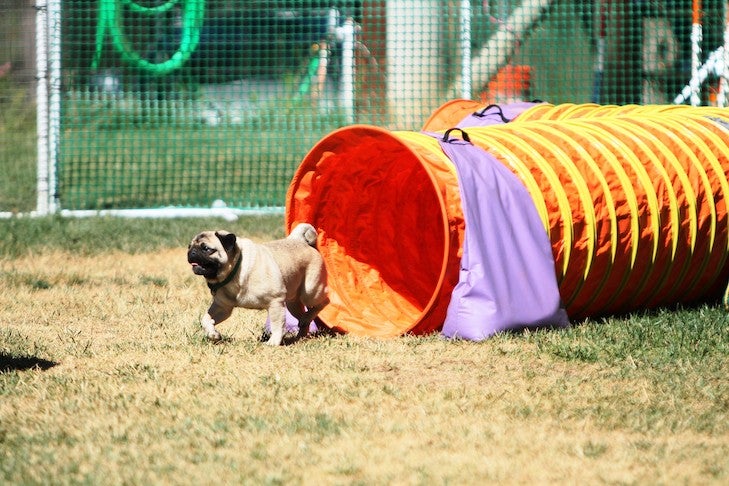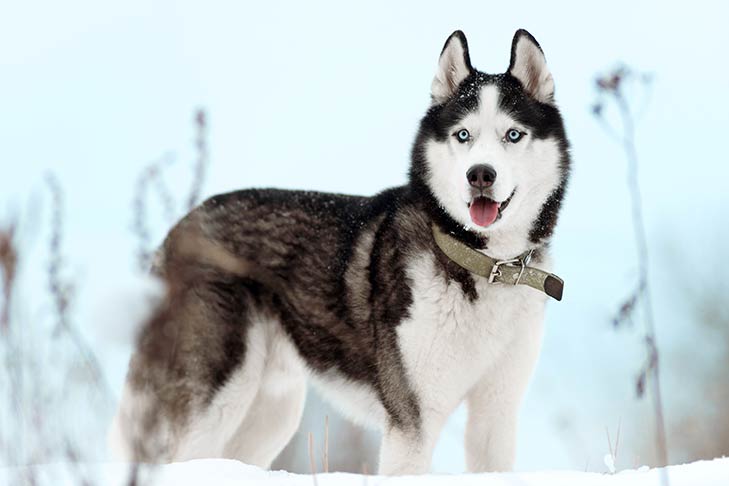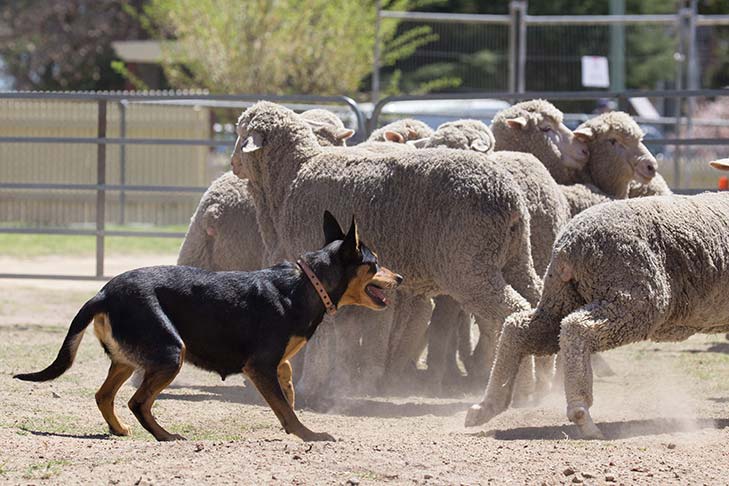How Long Will It Take For Rayya To Leave Your Service?
Dogs get an unmistakable twinkle in their eyes the minute you reach for their leashes or open the back door. That'southward because they know that they'll be enjoying some fresh air and sunshine in no time. After all, when they're outside, dogs have an endless supply of interesting smells to rails down, squirrels to chase, patches of sunshine to lounge in, and, of course, stinky mud puddles to roll around in.
While dogs honey spending time outdoors, information technology's best to bring them in before bedtime to spend time with your family. But you lot might be wondering how long you can continue your domestic dog outside safely during the twenty-four hours, specially in hot or cold weather. The reply is a piffling more complicated than yous'd expect and varies according to your private dog's needs, health, and breed. Hither we explore just how to determine when it'due south time to call your pup back inside after a solar day of outdoor fun.
Smaller Breeds Have Dissimilar Needs
Dogs come in all sizes and breeds, which tin affect how long it's safe to leave them outside. While larger dogs with thick coats may savour outdoor romps for longer periods in dank temperatures, their smaller single-coated and hairless counterparts, on the other hand, tin can spend more time outside on sunny days simply not in the cold.
Smaller pups can quickly develop hypothermia and frostbite in cold atmospheric condition, warns Dr. Sarah Wooten, a veterinarian on staff with Pumpkin Pet Insurance. This applies to pocket-size and hairless breeds similar the Poodle (Miniature), Maltese, Chihuahua, Xoloitzcuintli, and Chinese Crested.
While minor pups can spend a few hours outdoors in temperatures between 60ºF and 90ºF, keep outings in temperatures beneath 32ºF and above 90ºF to brusque spans of no more than than 10 to 15 minutes, recommends Dr. Wooten.

Larger Breeds Have Unlike Needs
Medium to large dog breeds like the Siberian Husky, Samoyed, Malamute, Newfoundland, and Bernese Mountain Dog are adapted to extremely common cold temperatures because of their thick double coats. For this reason, they can stay outdoors longer in temperatures below 32ºF, unremarkably for 30 minutes to an hour, says Dr. Wooten. Additionally, healthy chill breeds can stay exterior for indefinite period of fourth dimension during chilly days as long as they are acclimated.
"The long guard hairs that grade the outer layer of fur protect against snow or ice and can even shed water; the soft undercoat lies close to the skin and keeps a dog warm and dry out," says Alexandra Bassett, CPDT-KA, Lead Trainer & Beliefs Specialist for Dog Savvy Los Angeles. While these double-coated dogs shed their undercoats in the summer to stay cooler, don't leave them out for long in very warm temperatures in a higher place 90ºF.
Livestock-guarding breeds, who are typically medium to large in size tin can stay out for longer spans of time when the weather is temperate, between 60ºF and 90ºF, especially if they take a job to go on them busy, recommends domestic dog trainer Danielle Mühlenberg of Pawleaks.
Your Dog'south Age and Health Matters
"At that place is no 1-size-fits-all rule, and the decision to leave your dog outside has to exist a personalized, private choice," says Dr. Wooten. She recommends that puppies under viii weeks of age and toy breeds generally exist kept out of extreme weather situations because they have a harder fourth dimension regulating their body temperatures.
For hearty and agile dogs who are regulars on the AKC Agility excursion or who are preparing for the Iditarod, spending time outdoors is an important function of training. Merely, if your dog is elderly or dealing with a health condition, your pup should spend about of their time indoors and with short, supervised outings.

Brachycephalic Brood Considerations
When it comes to very common cold and hot, humid temperatures, it's important to proceed brachycephalic breeds indoors, especially when exercising, recommends Dr. Wooten. That'south considering these short-nosed pups—including French Bulldogs, Bulldogs, Boxers, Cavalier King Charles Spaniels, Shih Tzu, Boston Terriers, Mastiffs, and Pugs—are the most sensitive to farthermost conditions atmospheric condition.
"Considering of the construction of their upper airways, dogs with short faces have decreased capacity for thermoregulation and lower oxygen saturation levels in the blood than non-brachycephalic dogs," says Bassett. This means they can't effectively cool themselves downward by panting in the oestrus and they become extremely common cold when temperatures drop. This can quickly atomic number 82 to heat stroke or hypothermia in a short flow of fourth dimension, and so e'er monitor these pups when outdoors.
What the Law Says
Well-meaning lawmakers take recently passed legislation in many municipalities that regulates the atmospheric condition in which you're allowed to go along your dog exterior. These laws are non based on your dog's size, historic period, brood, or health and use across the lath to all dogs.
Currently, 23 states have laws restricting the amount of time your can humanely tether your dog to a solid object in your own backyard, sometimes for every bit little as thirty minutes. Nearly laws mention that your dog cannot be confined or tethered for whatsoever menstruation of time in temperatures below 32ºF, during extreme heat advisories, and when the National Weather Service bug a tempest warning for the expanse. Many municipalities accept laws regarding the amount of outdoor shelter your dog needs, sometimes requiring upwards of 200 square feet of infinite per dog.
Although these laws are meant to protect dogs, they don't account for the outdoor preparation and activities of working dogs, hunting dogs, and those participating in outdoor sports. But, as an owner, you practice need to monitor local laws to ensure you are following them or you could hazard getting a fine and having your dog taken away.

Making Your Dog Comfortable Outdoors
Spending a little time outdoors is a keen fashion for your dog to get some exercise. In your pup'southward outdoor area, y'all'll need to provide some fresh nutrient, water, and appropriate shelter from the common cold, rut, air current, and pelting. Shady shelter is especially important for dogs with very short hair or white hair who tin can hands get sunburned, recommends Dr. Sara Ochoa, a veterinary consultant for DogLab.com.
Of course, when your dog is outdoors, attempt to spend as much fourth dimension with them as possible. "Too much loneliness and they may get bored which could lead to digging, destructive behavior, or escape attempts," says Mühlenberg.
Most importantly, never put your dog in outdoor conditions where the wellness and safety of the pup is at take a chance. And e'er monitor your pooch for signs of discomfort similar panting, shivering, shaking, or extreme fatigue. Recall, your pup is part of your family unit and it'southward upwardly to you to ensure your furry friend stays rubber both indoors and outdoors.
How Long Will It Take For Rayya To Leave Your Service?,
Source: https://www.akc.org/expert-advice/health/how-long-can-you-keep-your-dog-outside/
Posted by: hillmands1954.blogspot.com


0 Response to "How Long Will It Take For Rayya To Leave Your Service?"
Post a Comment